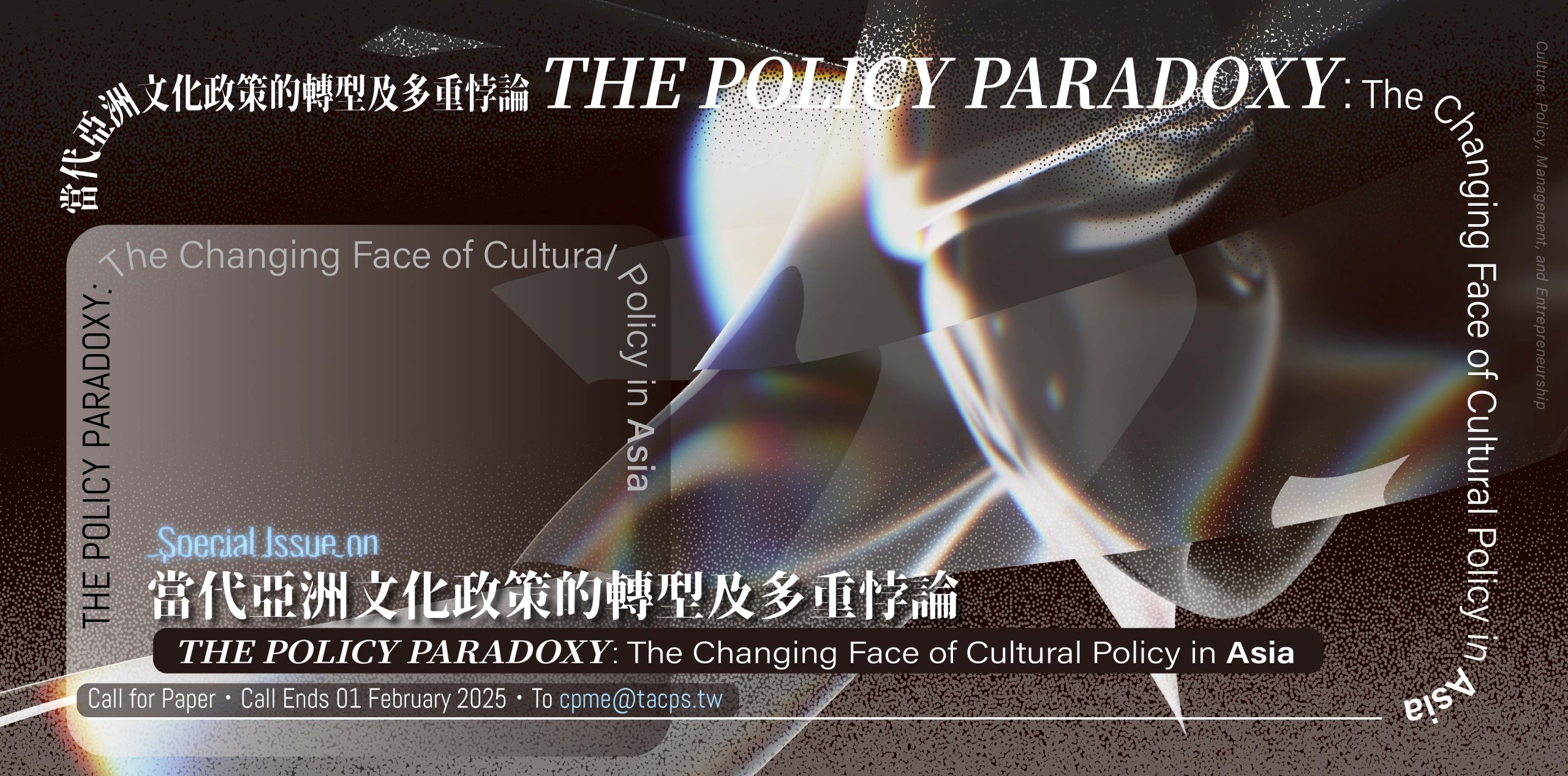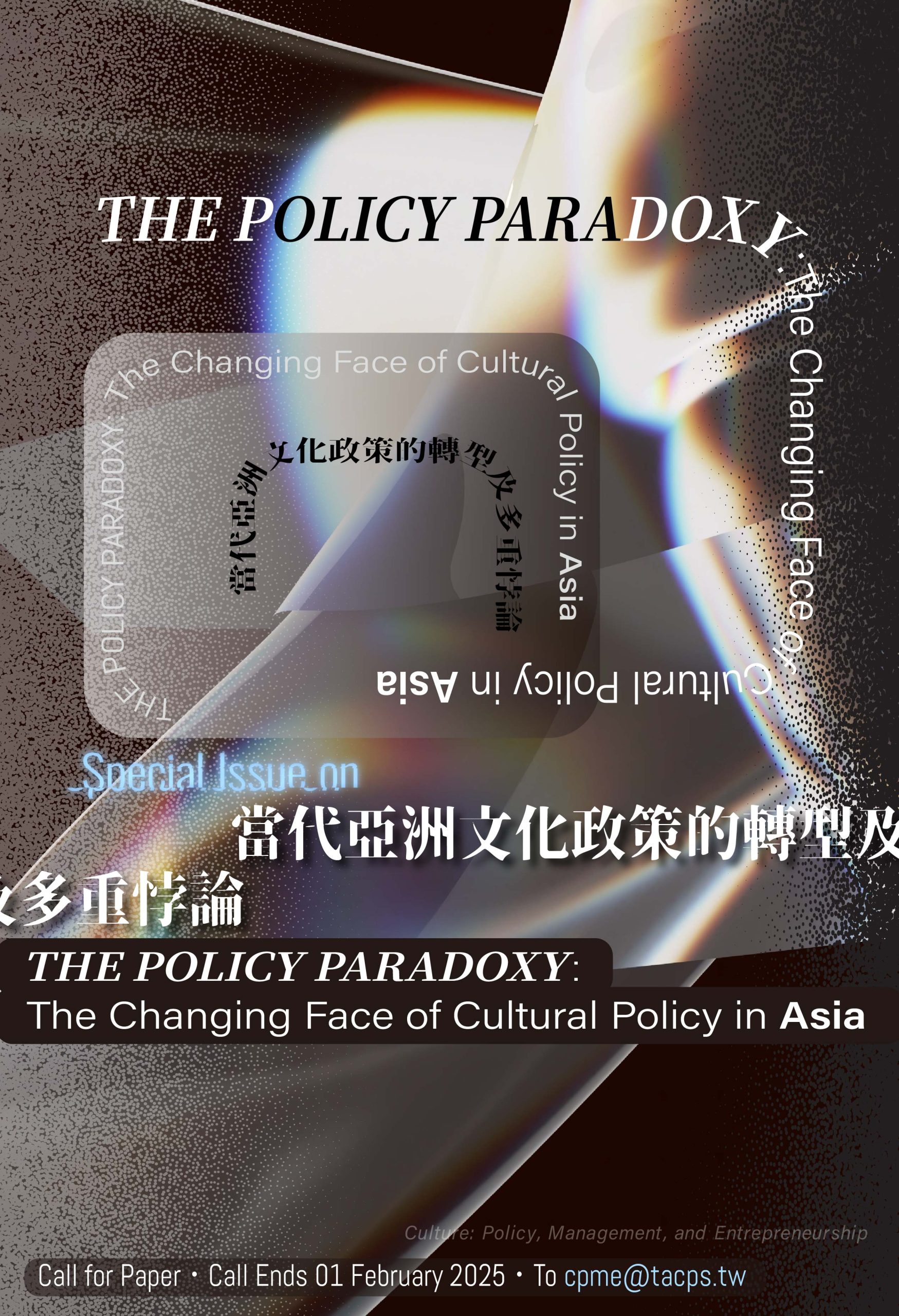

Submission Deadline: 01 February 2025
Guest editor for the Special Issue
- Venka Purushothaman is the Deputy President and Provost of LASALLE I University of the Arts Singapore and the founder of the Asia-Pacific Network for Culture, Education and Research (ANCER).
Co-Editor
- LIU Jerry C. Y. is the Professor and Dean of College of Humanities at National Taiwan University of Arts, and the Chief Editor of CPME
Cultural Policy as a cartographic instrument has helped appraise, archive, and advance the evolution of culture in society. The Influence of continental and American cultural theory and cultural studies, informed by modernity-at-large (Appadurai, 1996), is undeniably potent in global cultural policy research, situating cultural and heritage practices, framing creative economies, and defining socially engaged art practices. Moreover, “culture” is increasingly circumscribed within rubrics and tables of developmental goals and geo-political soft power – be it the UN Sustainable Development Goals (SDGs), China’s Belt and Road Initiative (BRI) or the EU’s International Cultural Relations (ICR) thereby presenting culture as a free-standing aspirational enterprise as opposed to an organic evolving practice. Cultural policy, as we know it today, documents the emergence of the modern urbanising city and its communities by studying traditional and popular cultures. It remains helpful to appreciate the effect of cultural policy – to connect communities and endow artists with the right to be visible.
In Asia, rapid economic growth in the past decades has fuelled the rapid development of cultural and creative enterprises as governments engineer culture as a public service, global good and brand ambassador. These developments are well-documented, be it K-pop cultures, gaming in Asia, or Hong Kong cinema. However, the need to articulate “cultural location” through the identification of situated cultural knowledge and lived experiences is rising in many parts of Asia. Informed by seismic demographic shifts edging towards two opposite ends (seniors and youth), this “need to articulate” sets the stage for an increasingly diversified and divergent global environment. The present modalities of cultural policy are limited.
This special issue of CPME seeks to study the organic production and circulation of emerging cultures in Asia as seen from within and without. It aims to feature unique characteristics that define evolving cultural policy frameworks and creative economic ecosystems across Asia. Central to this exploration is an examination of how these modalities shape international cultural relations within the region and beyond.
Inviting theoretical and case study analysis, authors are encouraged to deliberate upon the following questions:
- In an increasingly participatory socio-political environment, how do communities engage with divergent and diversified voices and enable various peoples to talk, listen, and appreciate local and global challenges?
- Who are the new socio-cultural actors (facilitators of activities) in the new creative economy in East and Southeast Asia as the overlap of urban, demographic, digital and socio-economic policies (from arts to urban planning to tourism) coalesce?
- Does the global south warrant a cultural policy while it remains small and presented through the lens of a global north?
- Can international cultural relations (ICR) be valuable for situated knowledge practices in Asia?
- How does cultural policy address the increasingly interdisciplinary nature of arts and creative practices that span spatial and temporal geographies?
This issue encourages researchers and scholars to present unique and unconventional approaches to cultural policy to elucidate new dynamics in Asia. While critiques of the conventional cultural policy modalities are welcome, this special issue seeks to present new and refreshing case studies to inform emerging trends.
Submission Guidelines
Academic Research Papers submissions of 5,000-10,000 words in English and 12,000-20,000 words in Chinese) with the Authors Profile submission form for CPME (please refer to the journal website http://cpme.tacps.tw) should be emailed, as Microsoft Word attachments, to T3CPME at cpme@tacps.tw by 01 February 2025 in CMS Style. All research articles will go through a double-blind peer review procedure. The Special Issue is planned to be published in May 2026.
Book Reviews, Art Critiques, Curating Critiques, Policy Reviews & Case Reports related to the current theme of “The Policy Paradox: The Changing Face of Cultural Policy in Asia” will also be welcome. All review articles and case reports will be evaluated internally by the CPME Editorial Board.
CPME is a high quality, open access, peer-reviewed Chinese and English languages journal published dually online and in print by Taiwan Association of Cultural Policy Study (TACPS) every May and November. The journal follows the standard for Ethics and Publication Malpractice set by the COPE.
